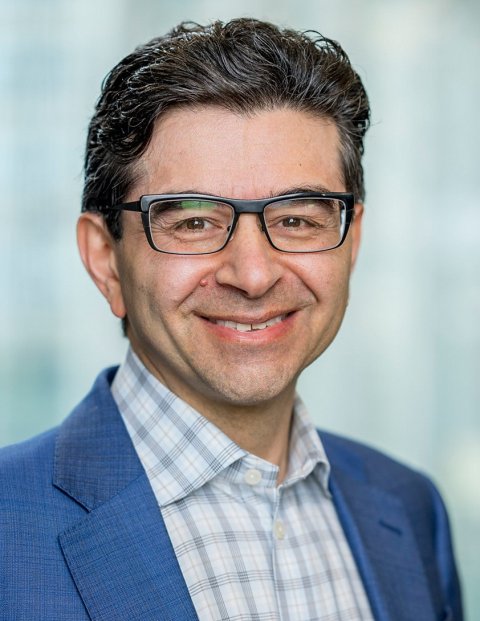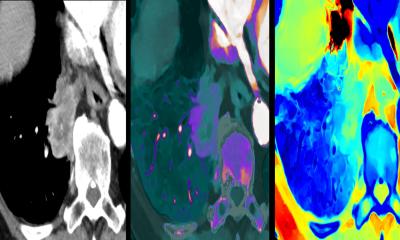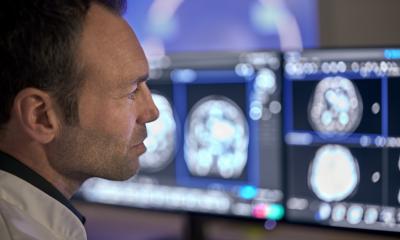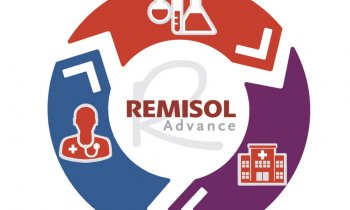Article • Transformative technology
Generative AI in healthcare: More than a chatbot
‘Computer, why did the doctor take that MRI scan of my leg? And what did it show?’: Popularized by OpenAI’s ChatGPT, generative artificial intelligence (AI) is already beginning to see practical applications in medical settings. The technology holds immense potential, with benefits for patients, clinicians, and even hospital administration, according to Shez Partovi, MD.
Article: Wolfgang Behrends
Image source: Martin Martz/Unsplash
We spoke with the Chief Innovation & Strategy Officer and Chief Business Leader of Enterprise Informatics at Philips about personalized medical information, hospital workflow optimization, digital clinical twins, and other plans the company has for generative AI in healthcare.

Image source: Philips
Talking about how healthcare can benefit from this technology, Partovi does not seem afraid to set the bar high: ‘The shift that generative AI will bring is nothing like anything that we have seen. It will be like the discovery of penicillin or insulin; it will be the most tectonic shift for healthcare that we will see in our lifetime.’ Unlike predictive models, which rely on extensive datasets and meticulous training, generative AI finds associations between data points to generate new content, the expert explains. To harness this potential, Philips is developing several products based on the technology, some of which have already arrived in clinical practice.
Among these is a tool that rephrases physician’s notes in a way that is easier to understand for the patient. Previous research has shown that medical information, even material intended for patients, is often too complex.1 ‘The idea is that the AI translates this complicated medical terminology to simple high-school level English and other languages,’ Partovi explains.
With its ability to quickly generate customized text, generative AI will take this approach even further, creating a completely new level of interactivity, the expert predicts: ‘In the future, people will talk to their medical record. They can ask the AI why their doctor performed an MRI scan on them, or why they were prescribed specific medication, and it will explain the medical indication in a way they can understand.’ With planned market introduction later this year, this conversational access to a patient’s medical record could be used to bridge the knowledge gap between doctors and patients, and help patients make informed decisions about medical procedures, Partovi is convinced.
Starting the shift with an AI-generated status report
For a three-minute visit, the doctor may have to spend up to 20 minutes to look through the medical records. We want to use AI to reverse that ratio, so the doctor has more time for the patient
Shez Partovi
A similar approach can be applied to provide physicians with relevant patient information, for example before consultations: ‘Reviewing a patient’s medical history can be very time-consuming,’ the expert points out. ‘To mitigate this, the AI can quickly analyse the dataset and generate a summary which provides the physician with the relevant background information.’ As a result, less time is required for preparation, leaving more for the actual visit, Partovi argues. ‘More and more medical data is generated for each patient, which can prove overwhelming for the clinicians. For a three-minute visit, the doctor may have to spend up to 20 minutes to look through the medical records. We want to use AI to reverse that ratio, so the doctor has more time for the patient.’
Finally, generative AI can contribute to more efficient workflows – both on department and hospital levels, Partovi points out. For example, at the beginning of their shift, the director of a hospital’s emergency department could task the AI with generating a succinct overview of the situation – patient volume, staff attendance, even a prediction of upcoming workload changes – to be able to act and plan ahead. ‘This, too, will take place as a conversation with the AI, which represents a digital twin of the hospital,’ the expert describes, pointing out that the applications can benefit every member of the hospital team up to the administrative level.

Image source: Philips
Liquified data to enable comprehensive analyses
As the AI models get more refined, the smaller the risk [of hallucinations] becomes, and the more automation is possible. However, there still needs to be a human expert in the loop, and that will not change anytime soon
Shez Partovi
However, to exploit this potential, the existing data must be liquidated, made available to the AI, he continues: ‘Almost every medical device is generating data, but most of this information is sitting inside silos, and the AI cannot make associations because it is all separate. We have therefore created a solution called Capsule, a platform to integrate all the medical device data. These can then be used by the AI for predictive and generative models.’
A well-known challenge for AI models is the generation of improper responses, commonly referred to as “hallucinations”. To avoid this, human validation of the results remains a key element, Partovi says: ‘As the AI models get more refined, the smaller the risk becomes, and the more automation is possible. However, there still needs to be a human expert in the loop, and that will not change anytime soon. At Philips, we see AI as a tool that makes clinicians, nurses, and physicians more effective, to make their life easier, not to remove them completely.’
Profile:
Shez Partovi, MD, is Chief Innovation & Strategy Officer and Chief Business Leader of Enterprise Informatics at Royal Philips, where he drives cloud transformation and AI in healthcare. Previously, he spearheaded global business development efforts at Amazon Web Services. As a renowned neuroradiologist, clinical professor, and co-founder of Arizona State University's Biomedical Informatics Department, his expertise bridges the fields of medicine and technology.
25.04.2024










